Introduction
Die casting is a metal forming process in which molten metal is forced into mold cavities under high pressure and then cooled in order to form solid metal parts. This article contains the following topics you need to know about die casting:
- What is Die casting?
- Materials Used in Die Casting
- Process of Die Casting
- Pros and Cons of Die Casting
- Products Produced by Die Casting
- History of Die Casting
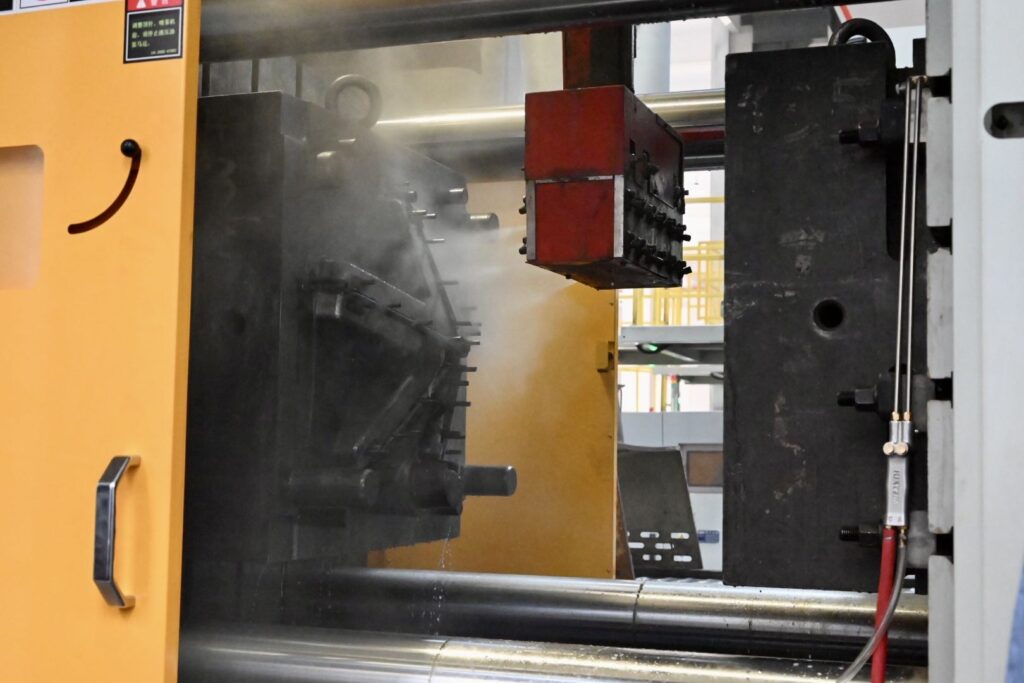
What is die casting?
Die casting is a metal forming process in which molten metal is forced into mold cavities under high pressure and then cooled in order to form solid metal parts.
Die cast products are typically made from non-ferrous metal castings such as zinc, aluminum, copper, magnesium, lead, tin, bronze, and some alloys; alloy tool steels may be formed through die casting as well, although the preferred fabrication method for steel parts is forging. Every die cast metal part is formed in a die ( sometimes called molds), and every mold is specially designed for shaping metal in a certain way.
For many years, die castings have presented a cost-effective and highly versatile alternative to other metal shaping methods such as forging and hand tooling. Die castings are manufactured by hot chamber or cold chamber die casting under carefully controlled pressures.
The demand for die castings, particularly automotive castings and other castings used in industrial products, is very high throughout the world. Many manufacturing industries use die cast parts both in their products and equipment.
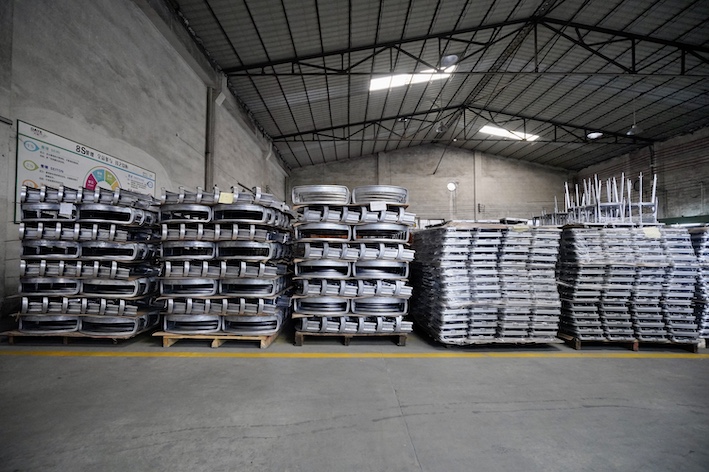
Materials Used in Die Casting
As mentioned above, there are several metals that are commonly used in die casting today, with the most common being zinc, aluminum, magnesium, copper, lead, and tin. Each metal has its own advantages and disadvantages, and each is held to strict industry requirements.
Aluminum
- Low density/Lightweight
- Highly resistant to corrosion
- High operating temperature
- Highly stable
- Highly conductive, which allows for its prevalence in electrical industries
- Highly thermal conductivity
- Completely recyclable
- Relatively easy to cast
- It requires the use of a cold chamber, as opposed to most of the other metals on this list, which can be cast in a hot chamber machine
Zinc
- High density
- High ductility
- Good impact strength
- Very good surface smoothness
- Can form very thin or fine parts
- Low melting point, the cast die will be in use for far longer than dies used for some other metals.
- Susceptible to corrosion, often requires additional coating or plating before use
Magnesium
- Extremely low density
- Very high strength-to-weight ratio
- Relatively easy to cut
- Displays excellent machinability even after it has been cast and processed, and it can be processed in either a hot or cold chamber machine
- Susceptible to creep or cold flow, generally unsuitable for use in very high temperature or high-stress environments, a weakness that is currently being combated with various magnesium alloys as magnesium becomes ever more popular in the worldwide industry
Copper
- Extremely tough
- Extremely strong
- Very resistant to corrosion and wear
- Highly stable and conductive
- Very high melting point so that dies and casting chambers used to treat this particular metal tend to have a significantly shorter lifespan than those used to treat various other metals
Lead and Tin
- Both high density
- Both display extremely close dimensional accuracy
- For public health reasons, lead and tin are not allowed for use in any food service applications, but they are typically used in combination with some of the metals listed above to prevent corrosion.
Process of Die Casting
Every die cast metal part is formed in a die (also called molds), and every mold is specially designed for shaping metal in a certain way.
For closed die castings, which make up the majority of castings, the mold is cut into two separate metal blocks; in order to form a complete mold, the tooled blocks are placed together with cavities aligned. Once the die has been created, it is sprayed with a lubricant that helps control its temperature and assists in part removal once the cast is complete.
The die is then closed, and molten metal is poured into the shot sleeve and injected into the die under high pressure by a plunger. Pressure is maintained within the die until the cast has solidified, then the die is opened and ejector pins push out the solidified “shot.”
This metal piece is considered a shot until the excess material that has solidified around it during casting is removed. This excess material typically consists of sprue, gate, runners, and flash that have formed in channels leading to the die mold and possibly in leakage areas between the mold cavities. The cast part is tooled and deburred to remove this excess and is sometimes put through additional secondary processes such as surface finishing, plating, and CNC machining.
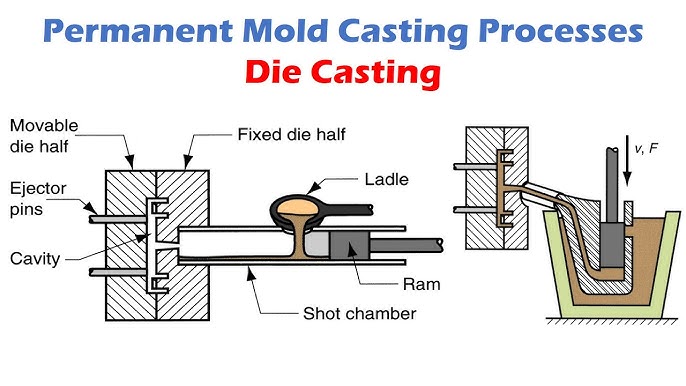
Die Casting Process Scheme. Subject to Sofeast Ltd.
Pros and Cons of Die Casting
Pros
1. No Delays in Production
The process does not take much time to complete. The molten metal is forced into the die. Then, it is allowed to cool down. As the metal solidifies, the two parts of the die are separated to take out the hardened casting. No matter how big the order from your client is or how sophisticated its design is, with the die casting method, you can efficiently meet production and delivery deadlines.
2. Versatility in Design
You can form a die of a desired shape and size and use it to produce metal castings as demanded by your client. Most of the time, dies are created in two sections; however, sometimes, dies can be of three to four sections. An intelligent designer can create a variety of designs, and there is no limit to it.
3. Complexity Becomes Convenient
Die casting is a simple method, but it can be used to produce complex shapes easily and conveniently.
4. Durable Parts
Through the die casting manufacturing process, parts with higher strength can be created. While the metal is in the liquid state, some add-ons can be introduced (such as a stronger metal or alloy) to increase the strength and durability of the casting.
5. Metal Parts with Visual Appeal
Your designers can design a resourceful die to create parts of nice visual appeal. Other metal manufacturing processes may not be able to offer the precision in design that die casting does.
6. Multiple Finishing Techniques
As mentioned earlier, with the die casting method, parts can be produced with smooth or textured surfaces. You can apply desired finishing on the surface of the casting to suit the application requirement.
7. Dimensional Accuracy
Die castings are made from thoroughly-designed dies. This helps the manufacturers to achieve dimensional accuracy in the product. The parts have the exact measurement asked for by the client.
8. Recyclable Materials
As clients requirements, recycled materials can be used to produce casting parts. For example, aluminum can be repeatedly recycled without a decline in materials performance or quality. This will add extra value and selling points to your final products.
Cons
1. Not suitable for high melting point metals
2. Not suitable for large sheet metal parts
3. The cost of mold is relatively high.
4. Considering mold design, mold trial, and sample test, you should expect a rather long delivery time.
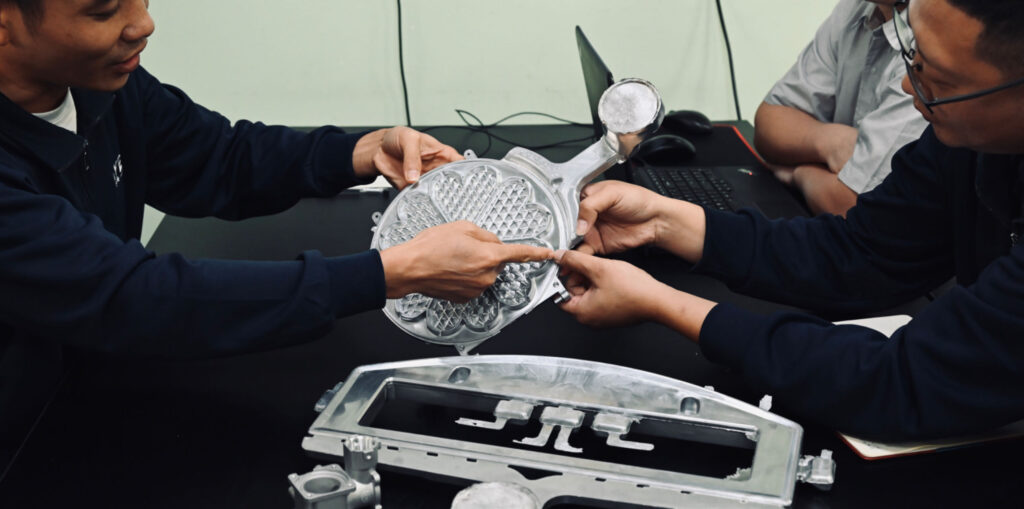
Engineers are reviewing the casting sample.
Products Produced by Die Casting
Because die casting can produce well defined metal parts with no need for further detailing after casting, the range of industrial, commercial, and consumer products produced by this process is very wide. Any non-ferrous metal product can be created with the computer numerical control or CNC machining process to ensure a highly detailed, durable end result, and the sheer amount of products produced in this way reflect that fact.
From products as basic as a door handle to those as delicate as the counterweight in a top of the line speedometer, the precision allowed by die casting machines provides a fail-proof way to consistently produce quality metal goods whose solid build and quality detailing far outweigh any tooling cost sustained. Specific examples of products produced by die casting include furniture components, household appliance components, lighting components, automotive components, and a wide range of other metal parts.
Computer and electronics industries use high tolerance magnesium die castings as housings and interior EMI enclosures as well as miniature die cast parts for various electronic equipment applications. In the automotive industry, almost every engine block is a die cast product. Die cast aluminum valve covers are also commonly applied in automobile engines. Cast zinc products are also widely used as door and cabinet handles.
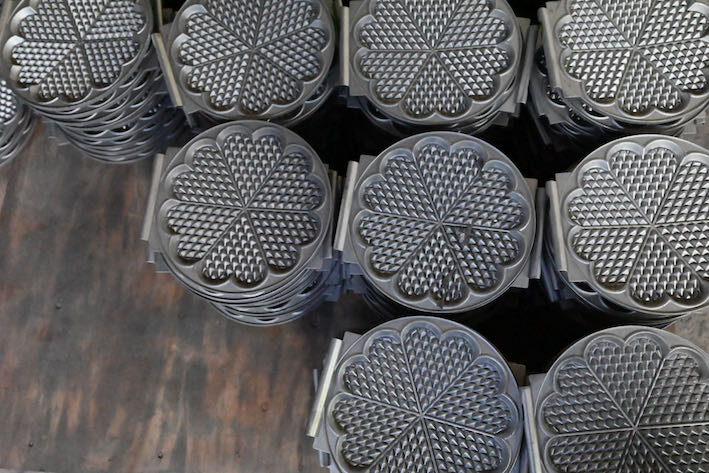
The waffle pans are waiting to do surface treatment.
History of Die Casting
Although the process known as investment casting (in which hot wax in a ceramic casing is melted, leaving a ceramic cast behind) has been around for thousands of years, the modern die casting process was first invented in 1838 for the purpose of providing movable type for printing presses. A small, handheld device that mechanized the printing industry was patented in 1949.
In 1885, Otto Mergenthaler invented the closest precursor to the modern die cast machine, called a linotype, but the machining and process of die casting still revolved very closely around the printing industry. It wasn’t until the turn of the new century, in the 1890s, that the broader applications of die casting began to be clearly understood, and there was a sudden variety of shape in the dies created—mass-produced elements like cash registers, phonographs, and frames were now able to be quickly cast without sacrificing quality for quantity.
One of the biggest changes to the die casting process throughout history has been the shift in the metals used. Originally, lead and tin were the primary metals used in any form of die cast, and the malleability of these metals greatly affected their strength-to-weight ratio. Around 1914, zinc and aluminum die castings began to hit the market. This greatly improved the strength of die cast products, and by the 1930’s, metals like copper and magnesium were in frequent use. Now, any non-ferrous metal can potentially be used in a die cast, with zinc, aluminum, magnesium, copper, lead, and tin still being the most prevalent metals in use.
As the variety of metals in use has increased, so too has the strength of the machines used to process said metals. In the early days of die casting, the machines used could only function under low pressure in order to consistently produce high-quality products, but such is not the case anymore. High pressure die casts are able to create an extremely high volume of highly-finished products, and the growth of different alloys allows for high quality in markets other than printing or manufacturing—some of the more common include aluminum alloys, copper alloys, and zinc alloys.
